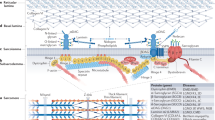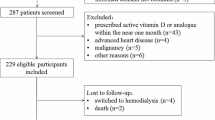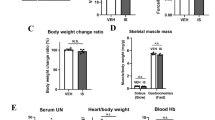Abstract
DURING investigations of the vitamin contents of different organs from the tunny (Thunnus thynnus)1, samples from the deep-seated red muscle as well as from the neighbouring ordinary muscle were analysed for niacin, riboflavin, pantothenic acid, vitamin B12 and thiamine. The results revealed an interesting relative distribution. With the exception of niacin, which showed a slightly higher value for ordinary muscle, the red muscle contained several times more of the other B-vitamins than the ordinary muscle.
This is a preview of subscription content, access via your institution
Access options
Subscribe to this journal
Receive 51 print issues and online access
$199.00 per year
only $3.90 per issue
Buy this article
- Purchase on SpringerLink
- Instant access to full article PDF
Prices may be subject to local taxes which are calculated during checkout
Similar content being viewed by others
References
Brækkan, O. R., Report on Technological Research concerning the Norwegian Fish Industry, 3, No. 3 (in the press).
Hamoir, G., Nature, 171, 345 (1953). Jebsen, J., Årsberetning vedkommende Norges Fiskerier, No. 3 (1954). Matsuura, F., Konosu, S., Ota, R., Katori, S., and Tanaha, K., Bull. Jap. Soc. Sci. Fish., 20, 941 (1955).
Matsuura, F., and Hashimoto, K., Bull. Jap. Soc. Sci. Fish., 20, 946 (1955). Matsuura, F., Yamada, S., and Hashimoto, K., ibid., 20, 950 (1955).
Author information
Authors and Affiliations
Rights and permissions
About this article
Cite this article
BRÆKKAN, O. Function of the Red Muscle in Fish. Nature 178, 747–748 (1956). https://doi.org/10.1038/178747a0
Issue date:
DOI: https://doi.org/10.1038/178747a0
This article is cited by
-
Modulus adaptive lubricating prototype inspired by instant muscle hardening mechanism of catfish skin
Nature Communications (2022)
-
Fish as a source of (micro)nutrients to combat hidden hunger in Zambia
Food Security (2020)
-
The association between amount of red muscle and mobility in fishes: A statistical evaluation
Environmental Biology of Fishes (1991)
-
Lactate dehydrogenase isozymes in the trunk and cardiac muscles of an antarctic teleost fish,Notothenia neglecta Nybelin
Fish Physiology and Biochemistry (1989)
-
Distribution and properties of lactate dehydrogenase isoenzymes in red and white muscle of freshwater fish
Fish Physiology and Biochemistry (1987)



